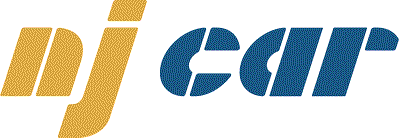Imagine fishing from your favorite pond and catching the same fish over and over again. And even when you catch a new type of fish, you aren’t able to keep it on the line because you don’t have the right pole. You hope things improve, but you continue to fish out of the same pond with the same pole. This simple metaphor reflects the state of diversity and inclusion in automotive retail.
The harsh reality is that the industry lacks representation in key segments, like women and minorities, and/or lacks the culture to support these groups when they are hired. Many dealership teams do not reflect the communities they serve, and there are negative implications to this that hurt the organization’s ability to innovate and grow.
The disparities are obvious when you look at the data. Women consumers are responsible for 65% of new vehicle purchases and service work done at dealerships but only represent 21% of dealership employees. Likewise, minorities represent 30% of new vehicle car buyers but only represent
6% of dealership owners.
Companies with diverse teams are not only more attractive to prospective employees, but also have better ROI. According to a McKinsey study, companies with more racial diversity are 36% more likely to have greater financial returns than average and companies with more gender diversity are 25% more likely to perform better financially.
A focus on diversity and inclusion is a business decision. The reality is that customers often feel more comfortable when a dealership’s staff has representation that looks like them. For example, a dealership with an all-male staff is at a disadvantage when half the population is female. A dealership with all white employees is at a disadvantage in a community with a significant Latino population.
But there are other implications in our current environment to consider. The “great resignation” occurring in America has resulted in 4.5 million people voluntarily leaving their positions as of November 2021, exacerbating employers’ ability to retain their teams.
Now, this doesn’t mean you should seek to hire every kind of person. But it does mean that you should strive to build a staff that is representative of the demographics of the community that you serve. There is an opportunity to “fish in new ponds and with new poles,” attracting talent that may look different than the typical automotive profile but have transferable skill sets.
While diversity is important, it’s imperative to also focus on the inclusion part as well. Even if you succeed in attracting more diverse talent, those employees are not likely to stay until dealerships create more inclusive environments for them to thrive. This means dissecting the current culture and the environment it creates before focusing on attracting diverse talent.
So, where should a dealership start? In order to breakthrough, it’s going to require significant intention and effort. It’s not a matter of “hoping” that you’ll “catch more fish in that pond.” It’s actively finding some “new ponds and new equipment and strategies for fishing.”
Below are a few ideas to consider when looking to increase diversity and inclusion at your store:
- Get leadership buy-in — Leadership must understand the WHY and have bought in. Otherwise, employees are less likely to follow, and the initiative will fail — kick off your diversity initiative with a management meeting to help leadership understand how this initiative will benefit the dealership and them personally.
- Hire a DEI consultant — Often, an “outsider” can help us navigate and build momentum faster. A DEI (Diversity, Equity, and Inclusion) expert can provide an independent assessment of what’s going on and a game plan for improvement.
- Measure and identify your dealership’s gaps in diversity and inclusion — Send out an anonymous employee survey or host listening sessions to understand which demographics are underrepresented (relative to your community), and identify differences in employee satisfaction, perceptions, pay, etc.
- Create a diversity committee — Offer employees an opportunity to contribute through a committee that will brainstorm new ideas and help execute on key projects.
- Offer Employee Training — Bring in a DEI trainer to help your team cover key topics like allyship, sexual harassment, unconscious bias, and microaggressions.
- Spotlight the diverse talent you already have — Prospective employees, in many cases, will develop perceptions of your culture and environment based on what they see on your website and social media. Consider spotlighting the diverse employees you already have through social posts, pictures, and videos that share their unique stories and experiences.
- Get creative on where you recruit — Tap into and get involved with community and affinity groups that cater to the demographics you want to recruit. This includes women’s groups, historically black colleges, ethnic professional associations, youth groups, etc.
- Adjust your screening process — Employers often set requirements for jobs that have nothing to do with success, and these standards eliminate diverse talent. Identify the true requirements of the position, not based on historical trends but based on the current landscape. For example, in the past, selling cars took a more transactional salesperson that could aggressively close. However, in a world where most consumers are digitally armed with more information, the profile of a successful salesperson has changed to someone who is more relational and can offer value beyond a transaction.
- Offer key benefits and flexibility that attract diverse talents — One of the key reasons women avoid working in automotive retail is the lack of work-life balance and flexibility in schedules. However, this isn’t just an issue that impacts women. Younger generations, fathers, and single people (just to name a few) are looking for flexibility as well. It’s beneficial to get creative by offering alternative schedules like part-time roles, shifts, and regular days off on weekends.
- Establish policies on how to deal with diversity complaints before they are needed — It’s easy to ignore and allow bad behavior from your superstar salesperson. However, this is to the detriment of creating a diverse and inclusive culture. Instead, create policies upfront that identify bad behavior as it relates to diversity and inclusion and establish the actions you will take to address these behaviors (e.g., training, termination, etc.). More importantly, make sure to enforce these policies, regardless of who the offenders are, in order to set a good example for your entire team.
- Employee resource group — Start affinity or employee groups (e.g., women, Latino, etc.) that enable diverse employees to have a safe place to discuss their unique challenges, network and gain inspiration. You can also consider supporting outside organizations and encourage your diverse employees to participate.
- Celebrate key holidays that matter to diverse employees — Acknowledge and celebrate key holidays and months that are significant to diverse employees such as Black History Month, Women’s History Month, Chinese New Year, Hispanic Heritage Month, etc. This could include a mention in a sales meeting, newsletter, or an employee event.
Kerri Wise is President of Women of Color Automotive Network (WOCAN) and Chief Marketing Officer at AutoFi, a leading commerce platform for digital sale and financing. She can be reached at kwise@autofi.io.










